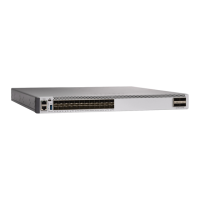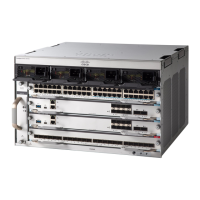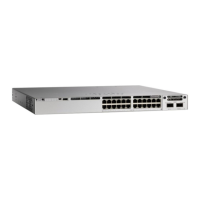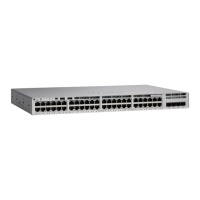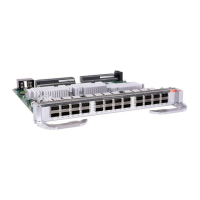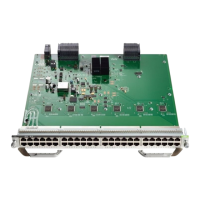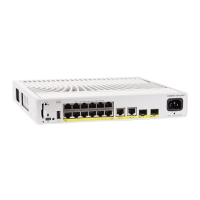OSPF NSF Awareness
The Network Advantage license supports OSPF NSF Awareness for IPv4. When the neighboring router is
NSF-capable, the Layer 3 Device continues to forward packets from the neighboring router during the interval
between the primary Route Processor (RP) in a router crashing and the backup RP taking over, or while the
primary RP is manually reloaded for a non-disruptive software upgrade.
This feature cannot be disabled.
OSPF NSF Capability
The Network Advantage license supports the OSPFv2 NSF IETF format in addition to the OSPFv2 NSF Cisco
format that is supported in earlier releases. For information about this feature, see : NSF—OSPF (RFC 3623
OSPF Graceful Restart).
The Network Advantage license also supports OSPF NSF-capable routing for IPv4 for better convergence
and lower traffic loss following a stack master change.
OSPF NSF requires that all neighbor networking devices be NSF-aware. If an NSF-capable router discovers
non-NSF aware neighbors on a network segment, it disables NSF capabilities for that segment. Other
network segments where all devices are NSF-aware or NSF-capable continue to provide NSF capabilities.
Note
Use the nsf OSPF routing configuration command to enable OSPF NSF routing. Use the show ip ospf
privileged EXEC command to verify that it is enabled.
For more information, see Cisco Nonstop Forwarding: http://www.cisco.com/en/US/docs/ios/ha/configuration/
guide/ha-nonstp_fwdg.html
OSPF Area Parameters
You can optionally configure several OSPF area parameters. These parameters include authentication for
password-based protection against unauthorized access to an area, stub areas, and not-so-stubby-areas (NSSAs).
Stub areas are areas into which information on external routes is not sent. Instead, the area border router (ABR)
generates a default external route into the stub area for destinations outside the autonomous system (AS). An
NSSA does not flood all LSAs from the core into the area, but can import AS external routes within the area
by redistribution.
Route summarization is the consolidation of advertised addresses into a single summary route to be advertised
by other areas. If network numbers are contiguous, you can use the area range router configuration command
to configure the ABR to advertise a summary route that covers all networks in the range.
Other OSPF Parameters
You can optionally configure other OSPF parameters in router configuration mode.
•
Route summarization: When redistributing routes from other protocols. Each route is advertised
individually in an external LSA. To help decrease the size of the OSPF link state database, you can use
the summary-address router configuration command to advertise a single router for all the redistributed
routes included in a specified network address and mask.
Routing Configuration Guide, Cisco IOS XE Everest 16.6.x (Catalyst 9500 Switches)
90
Configuring IP Unicast Routing
OSPF Area Parameters

